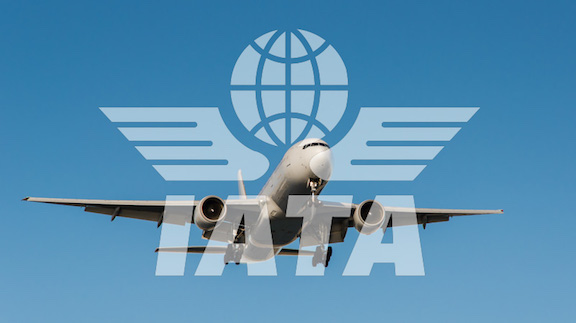Airline bid to cut pollution cost may wipe out carbon demand
Airlines are seeking to change the rules of a global system that’s set to limit their pollution starting next year.
The adjustment would make 2019 the only baseline year against which the airline’s carbon emissions are measured, an adjustment the industry says is necessary to reflect the grounding of many flights during the caronavirus pandemic this year. Currently, baseline emissions are set to be measured over 2019 and 2020.
By including this year in the baseline, airlines would need to buy extra emission credits to cover their greenhouse gas output starting in 2021.
Industry group the International Air Transport Association has requested a rule change to limit costs of the program. It said that 2019 emissions alone should form the baseline, easing the impact of the program on the industry.

Yet that could completely wipe out the need to buy any offset credits in the planned market if airline emissions remain below 2019 levels through 2023, said Louis Redshaw, founder of Redshaw Advisors Ltd. in London, a carbon trading outfit.
That would hit a small trickle of investments into renewables. Developers of emissions-cutting projects like wind and solar farms had planned to make facilities that generate carbon credits that they could sell to the airlines to cover compliance in the system. Without demand for those credits, the market won’t generate funds for projects or put pressure on airlines to rein in the greenhouse gases they produce.
“There would be no demand,” said Redshaw. “It puts business plans at risk in the offsetting market.”
One program deemed eligible for the market is the Clean Development Mechanism, where demand is already scarce and prices are near zero. That was an early form of a global carbon market that came out of the 1997 Kyoto Protocol on climate change, a predecessor to the 2015 Paris Agreement. CDM credits fell out of favor in the last decade after the European Union limited those securities for compliance in its own cap-and-trade system.
The planned airline emissions market is known as Corsia, or the Carbon Offsetting and Reduction Scheme for International Aviation. It has attracted countries hosting three quarters of the world’s flights.
IATA said the baseline rule change is needed to relieve financial pressure on the airlines at a time it’s been strained like never before. Without a change, many nations may decide not to participate in what’s a voluntary system.
Because of the pandemic, airlines will cancel more than 2 million flights through June and face a revenue plunge for 2020 of 44%, or $252 billion, IATA estimates.
“It is very clear that 2020 is a completely abnormal situation and that the impact of Covid-19 on the world’s aviation sector is unprecedented in its severity,” said Andrew Stevens, environment spokesperson at IATA, in an emailed reply to questions.
The International Civil Aviation Organization said it would consider the baseline question at a meeting of its governing council in June.
Should IATA win the argument, then Corsia might be deemed so weak the European Union could seek to bring international flights into its own emissions trading system, said Redshaw, who has traded carbon for almost two decades. The EU system currently covers only flights within the bloc. Expanding it might hit long-haul carriers outside the union.
“The European Commission is likely to seek to contain airline emissions in another way,” Redshaw said.
Should existing rules remain, demand in 2021 alone could be about 150 million tons, he said. That would cost airlines $750 million at $5 a ton.
Specific carbon offset prices have already increased, since ICAO published eligible programs last month, according to Viridios Capital Pty Ltd.
The price of a 2016-2020 vintage voluntary carbon unit, known as a VCU, has jumped to $1.10 a ton from $0.70 in early March, Eddie Listorti, chief executive of Viridios, a carbon trading company and emissions-cutting project developer in Sydney, said in an interview.
“Prices gapped higher,” he said. “And this is while airlines are grounded.”
If demand isn’t wiped out, some credits could triple in value, or even jump more than 10 times, based on EU carbon market values above 21 euros ($23) a ton, Listorti said. Other industries such as technology, palm oil, utilities and oil companies are also boosting demand for offsets, even if airlines don’t want many of them, he said.
“The long-term trend is higher because the private sector is behind this,” Listorti said.
Similar Stories
JAS Worldwide signs SPA with International Airfreight Associates B.V.
JAS Worldwide, a global leader in logistics and supply chain solutions, and International Airfreight Associates (IAA) B.V., a prominent provider of comprehensive Air and Ocean freight services headquartered in the…
View Article
LATAM is once again part of the Dow Jones Sustainability Index
View Article
CPaT partners with Wizz Air, Europe’s leading ultra-low-cost airline, to enhance aviation training
View Article
Air Transat takes off to Tulum from Montreal and Quebec City
View Article
Air France KLM Martinair Cargo achieves record online sales and accelerates commercial transformation
View Article[Freightos Weekly Update] Frontloading continues to put pressure on transpacific rates
Transpacific ocean rates increased slightly last week and are about 15% higher than at the start of December as frontloading ahead of expected tariffs is keeping vessels full.
View ArticleGet the most up-to-date trending news!
SubscribeIndustry updates and weekly newsletter direct to your inbox!





